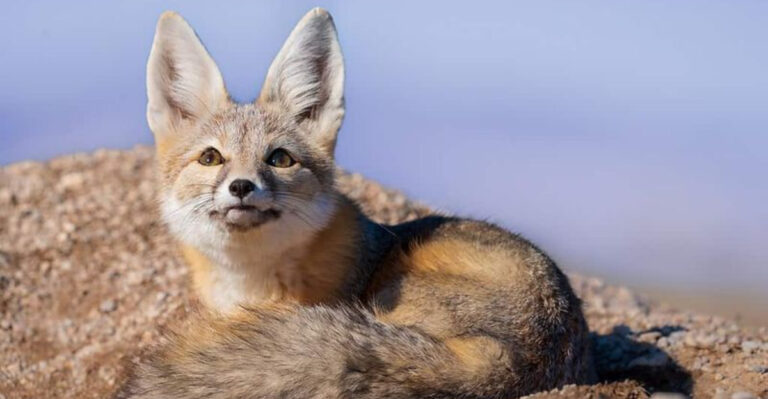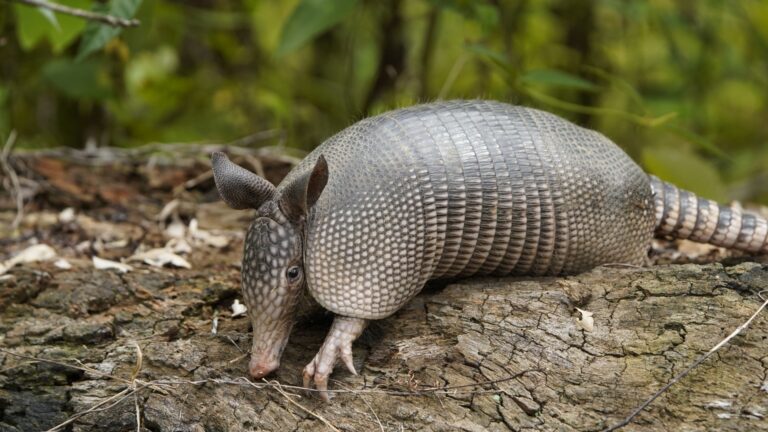Meet The 7 Most Beautiful Grosbeak Birds
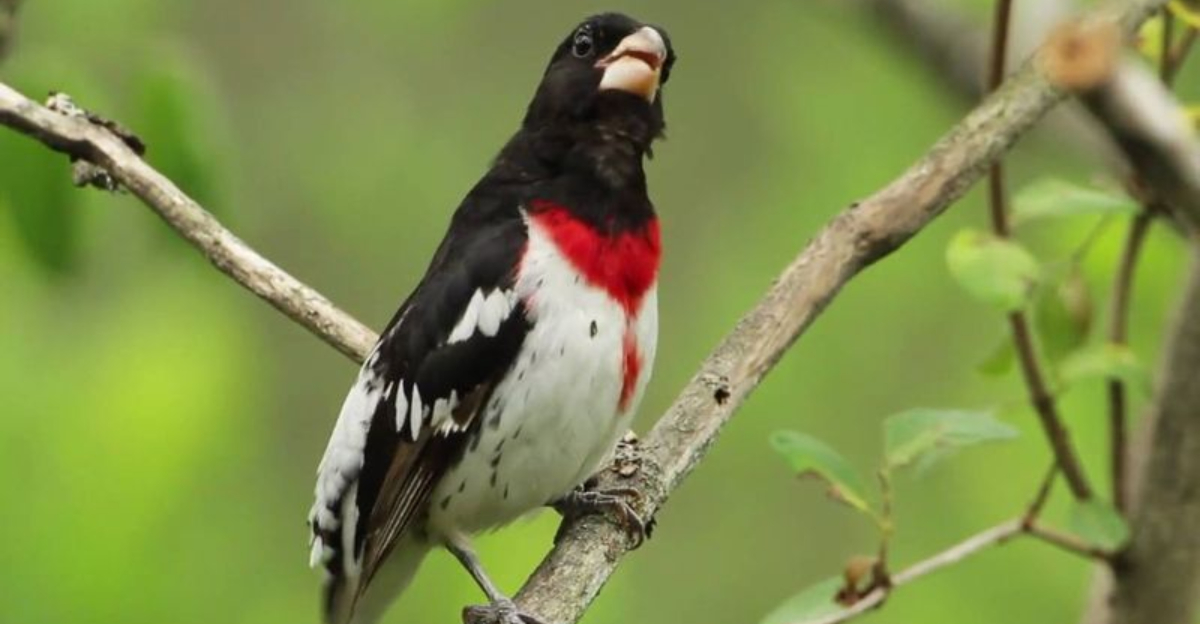
Grosbeaks are colorful birds with beautiful songs that will brighten your day. Found mostly in North America, these birds have plenty of personality!
Each species has its own quirks, making them a fun sight to spot. If you love nature, grosbeaks are definitely worth learning more about.
Let’s dive into five different types of grosbeaks, each one more fascinating than the last!
1. Evening Grosbeak
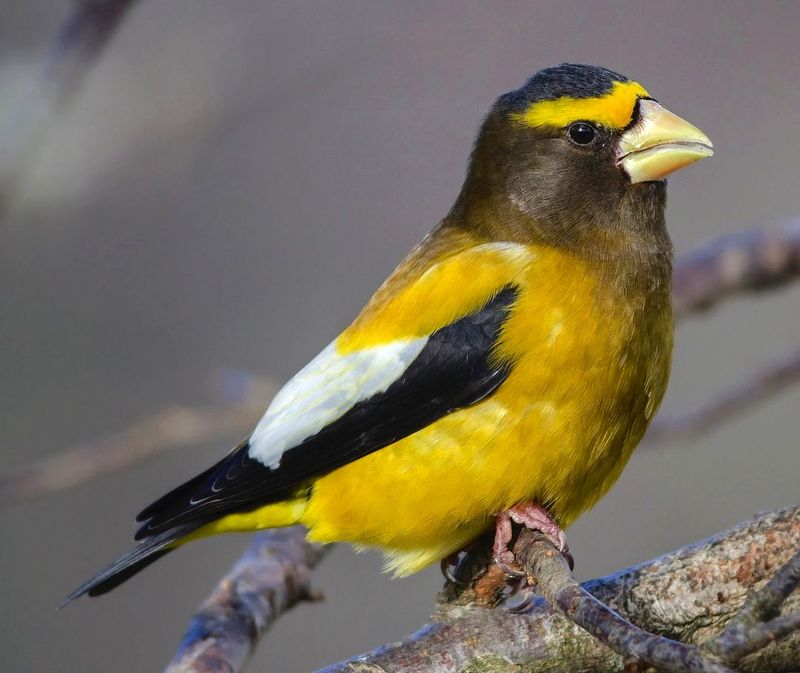
The Evening Grosbeak is a striking bird with bright yellow bodies and bold black wings. Females are more subtle with grayish tones, but still captivating.
These birds live in North American forests, often feeding on seeds and insects found in coniferous trees. Their powerful beaks make cracking hard seeds a breeze, earning them the “grosbeak” name.
Evening Grosbeaks are social and often travel in flocks, filling the woods with loud, chirping calls. As winter sets in, they migrate southward in search of food.
2. Black-and-white Grosbeak
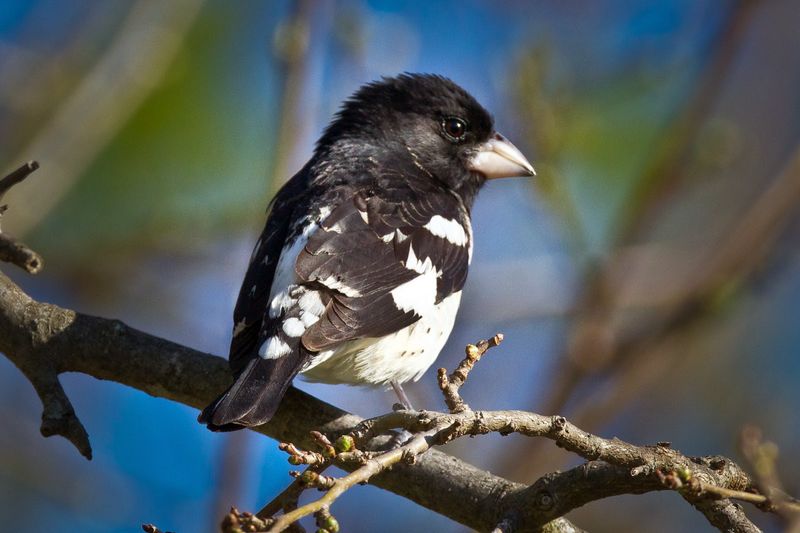
The Black-and-white Grosbeak is the definition of elegance. Its striking black-and-white plumage stands out in any setting.
With a song that sounds like a symphony, it’s a true treat for bird lovers. Mostly found in dense forests, you’ll often hear it before you see it.
Besides, did you know that this grosbeak is highly adaptable, thriving in different habitats and bringing class wherever it goes?
3. Blue Grosbeak
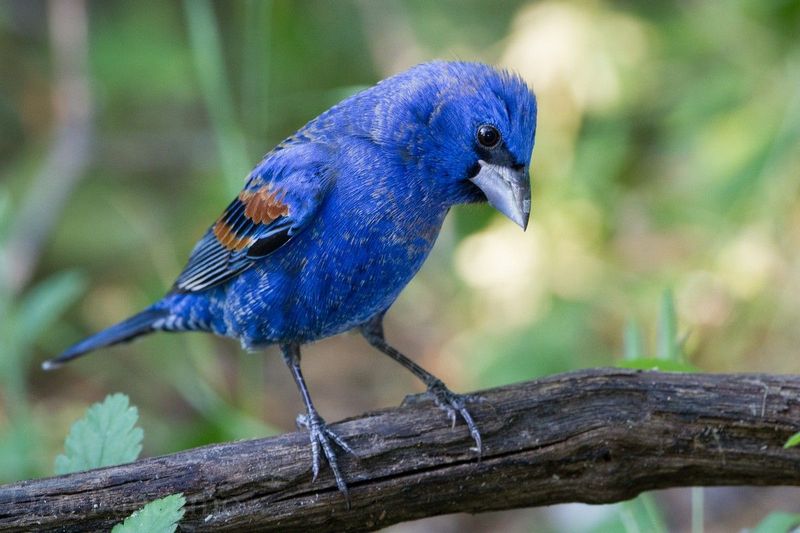
The Blue Grosbeak is a sight to see, with males flaunting vibrant blue feathers that sparkle in the sun.
Their chestnut and black wing accents make them even more eye-catching.
Females are more subtle with brownish feathers, blending perfectly into their surroundings.
These grosbeaks thrive in open fields, bushy areas, and near streams in the southern U.S.
They love feasting on insects and seeds, often perched quietly, waiting for their next snack.
4. Rose-Breasted Grosbeak
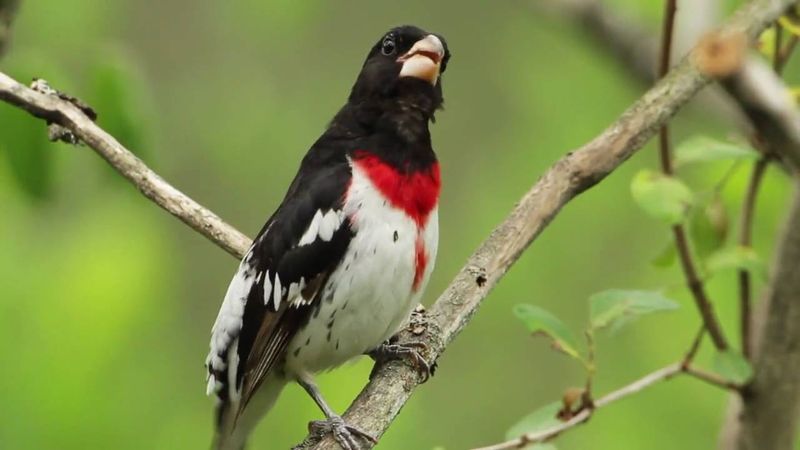
The Rose-Breasted Grosbeak is a stunning medium-sized songbird with a bold color contrast.
Males stand out with their black-and-white plumage and a vivid rose-red patch on their chest.
Females are more subtle with brown, streaked feathers, helping them blend into their woodland homes.
You’ll often spot them in deciduous forests and gardens during breeding season.
Their melodious, robin-like song fills the air with a sweet and fluid sound.
5. Black-Headed Grosbeak
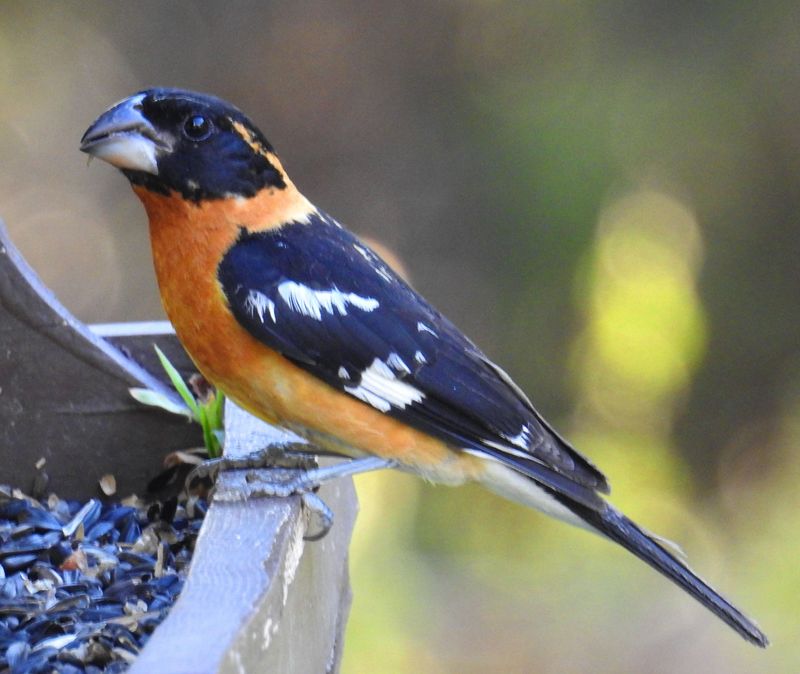
The Black-Headed Grosbeak is a stunning songbird with a bold black head and warm orange body.
Females are subtler, with brown feathers and streaked underparts, making them equally captivating.
These birds love deciduous and mixed woodlands in western North America, where their cheerful song fills the air.
They’re often mistaken for robins but are known for mimicking other bird songs too.
Their diet includes insects, seeds, and berries, showcasing their adaptability. As autumn arrives, they migrate to Mexico, proving their endurance and travel skills.
6. Pine Grosbeak
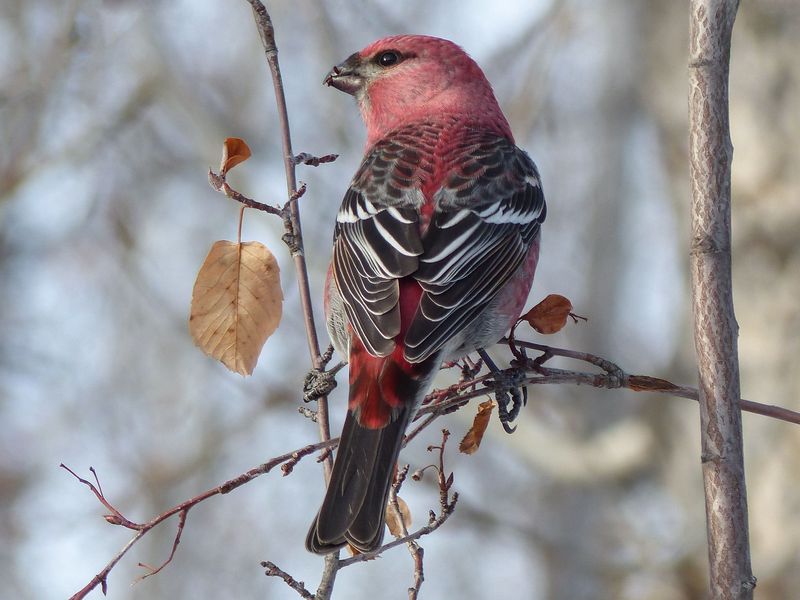
The Pine Grosbeak is a stunning bird, thriving in the boreal forests. The male’s rosy-red plumage is a beautiful contrast against the snowy winter landscape.
Females are more subtle with gray feathers and yellow hints, giving them a unique charm.
These birds are often spotted in small flocks, enjoying seeds and berries from spruce and pine trees.
7. Yellow Grosbeak
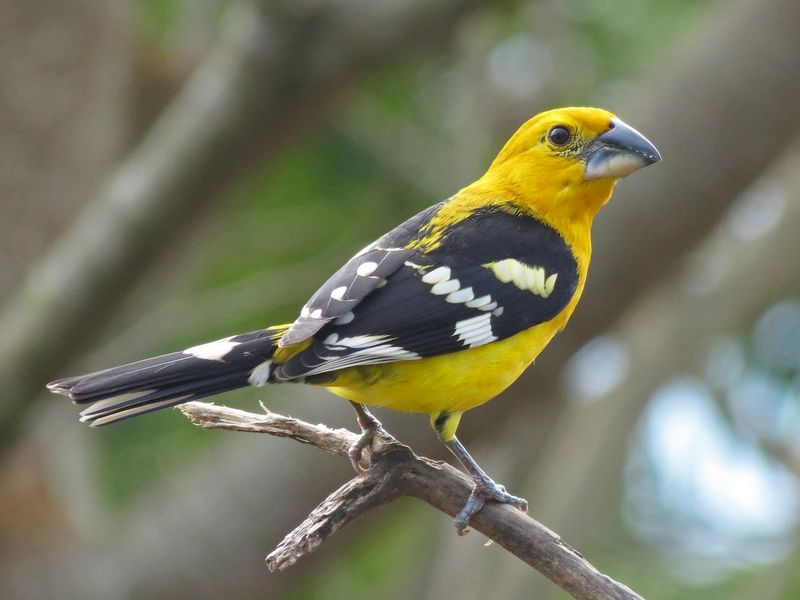
The Yellow one is like a burst of sunshine on wings. Its bright yellow feathers and black wings instantly grab your attention.
With its sweet, warbling song, this bird delights both the eyes and ears. It loves open spaces and is often spotted near water, perfect for bird watchers.
Here’s a fun fact: the Yellow Grosbeak is a bit of a mimic! It loves copying the calls of other birds, showing off its playful side.


